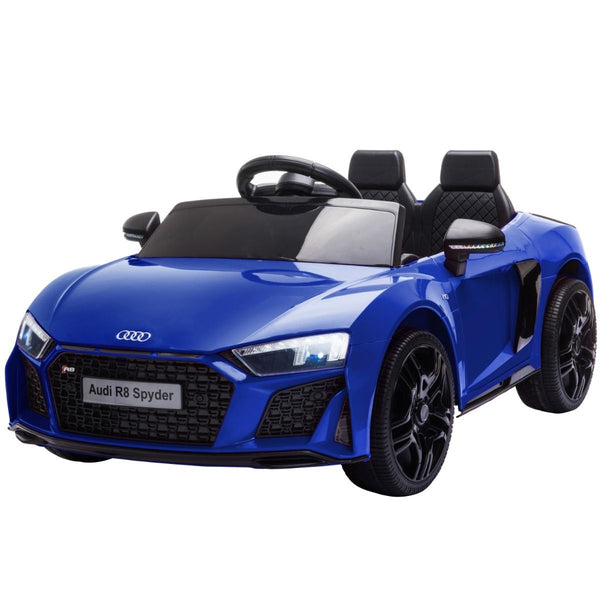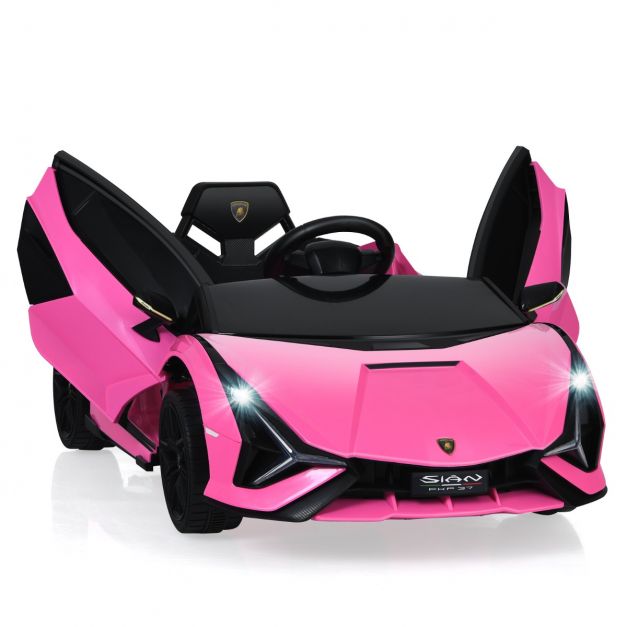Free Advice To Deciding On Kids Cars
Free Advice To Deciding On Kids Cars
Blog Article
What Information Do I Need To Be Aware Of About Battery Life & Charging Time For An Electric Ride-On Kid's Car?
Understanding the battery life and the charging time of an electric ride-on children car is crucial to the safety of your children and optimum performance. Here's what you should know - Battery Type -
Most electric ride-on cars for children use rechargeable batteries, typically lithium-ion or lead acid batteries. Lead-acid batteries take longer to charge and also have less battery life.
Battery Capacity
The battery's capacity, measured in ampere-hours (Ah) or watt-hours (Wh) will determine the length of time that a ride-on vehicle can operate on a single charge. Batteries that have a greater capacity allow for a longer play time before requiring recharging.
Run Time -
The run time is the longest amount of continuous operation that an electric ride on car can run on one charge. It can differ based on factors such as the battery's capacity, motor's power, the terrain, and weight of the driver.
For electric cars typically, the run time is between 30 and 2 hours from a single battery charge. However, some batteries with higher capacity may offer longer run times.
Time to Charge -
The charging duration refers to the time it takes to completely recharge the battery once it has run out of fuel. Charge times vary based on the battery capacity, charger specifications, and charging technique.
Charge times range between 8 and 12-hours for a full charge of electric ride-on cars. Certain models, specifically those with lithium-ion battery technology might have faster charging times.
Follow the charging guidelines provided by the manufacturer to ensure battery safety and long-term durability. The performance of the battery and its longevity can be negatively affected through overcharging or undercharging it.
Charging Methods -
Electric ride-on cars typically include a charger that plugs into a standard household outlet. Some models have fast-charging features or smart charging systems that monitors battery charge state and adjusts rate of charging in line with the state of charge.
To prevent damage to the battery or electrical system, make sure that the charger and port of the ride-on is compatible.
Batteries for Additional Use -
Some electric cars permit the purchase of extra or spare batteries. This can extend the duration of play. The availability of extra batteries allows you to swap out depleted batteries for fully charged ones, thus reducing interruptions between play sessions.
Knowing the battery's charge time of a ride-on kid's vehicle will ensure that you and your child can enjoy uninterrupted and fun playtime as well as thrilling adventures. Continuously charging the battery, and following appropriate charging guidelines will increase the battery's life and performance. Read the best kids ride on cars for website advice including digger ride, a toy car, toy a car, electric ride on, race car toy, childrens electric ride on, toy car toy car, toy a car, electric ride on cars, toy cars and more. . 
What Is The Difference Between Models For Outdoor And Indoor Children's Vehicles Designed?
In the indoors or outdoors, kids' cars are designed to function in a variety of circumstances and in different environments. The indoor Use Cars are different.
Weight and size Cars for indoor use are generally smaller and lighter to allow them to be tucked away in tight spaces like bedrooms, living spaces, and hallways. They are compact enough to fit through narrow passageways and corners without causing damage to walls or furniture.
Low Ground Clearance: Indoor-use cars have a low ground clearance, which means they won't become stuck or caught by obstacles such as rugs thresholds or carpets. This allows for smooth, free motion across indoor surfaces.
Smooth Wheels: The wheels on the inside of cars are made from smooth materials like plastic or rubber. This creates stability and grip on smooth surfaces, such as hardwood floors laminate floors, tiles. They are made to reduce the sound and avoid scratching or scuffing surfaces in indoor environments.
Limited Speed - Indoor vehicles are typically restricted to a lower speed in order to keep control and safety. This can help to prevent accidents and collisions with furniture, walls and other objects in indoor areas.
Outdoor Use Cars -
Durable Construction - Cars made for outdoor use are built using durable materials like strong plastic or steel to endure rough handling and outdoor elements such as sun, rain, and temperature fluctuations. They are less prone to sustain tears and wear that result from exposure to outdoor elements.
Higher Ground Clearance for Outdoor Use vehicles have greater ground clearance to navigate bumps, uneven terrain or other obstacles that are encountered outside. They can traverse rough surfaces like gravel, asphalt dirt, grass, or even dirt without getting stuck or harmed.
Traction Tires Car tires that are designed for outdoor use typically have treads or patterns that improve grip and traction when driving over uneven or slippery surfaces. This helps ensure stability and control while driving on outdoor terrain that prevents sliding, skidding, or sliding.
Weather resistance. Outdoor vehicles are usually equipped with weather-resistant components like sealed electronics, waterproof casings, and rust-resistant materials. This is to protect the car from damage caused by environmental factors. They are able to stand up to rain, mud or puddles, while retaining their performance.
High Speed - Cars made for outdoor use have greater speeds because they are designed to withstand the wide open areas and distances encountered in the natural world. Children can enjoy a more adventurous and thrilling riding experience.
If you take into consideration these design features and features, parents can select a children's car model that's tailored to their unique requirements and the environment they are in, outdoor or indoors, and ensuring an enjoyable, safe and lasting experience for their child. Have a look at the most popular discover more about Mercedes kids car for site recommendations including toy and car, a toy car, toy with car, childrens digger, childs ride on car, electric rideons, electric car ride, race car toy car, toy car, car toy car toy and more. . 
What Are The Different Types Of Remote Controlled Cars For Children? What Are The Benefits And Disadvantages?
Remote-controlled vehicles for children, also known as RC cars, come in a wide range of sizes, styles and prices to meet different budgets and preferences. This article will provide a summary of the pros and pros, and dimensions of remote controlled car types.
Electric RC Cars – Batterie-powered remote-controlled vehicles that can be used for both outdoor and indoor use. There are a variety of designs of RC vehicles, such as Buggies, trucks, and sportscars.
Nitro RC Cars – Gas RC vehicles with higher speeds and more power. However, they require more knowledge and expertise to operate. They are larger and usually cost more than electric RC Cars.
Scale Models - Remotely controlled replicas of real-life vehicles, which include cars, trucks aircrafts, and boats. Scale models are available in a variety of scales, ranging from 1 -10 to 1 -24 With larger scales offering more detail and realism.
Sizes -
Remote controlled cars for children are available in various sizes. From miniature to full-scale replicas, they are available in all shapes and sizes. The size and weight of the vehicle will impact the performance.
Micro-sized cars are small and lightweight, making them ideal for indoor play and use by children who are younger. The larger models offer greater performance and endurance, making them ideal for off-roading or racing.
Prices
Prices vary based on dimensions, features and quality of construction.
The price of micro-sized electric RC vehicles range from $20 to $100. However larger-scale electric or Nitro RC models are available between $100-$500.
The cost of scale models as well as hobby-grade RC vehicles range from several hundred dollars up to more than 1000 dollars, based on their level of performance and precision.
What are the pros and cons?
Pros -
Entertainment - Remote controls for children's vehicles provide endless entertainment and fun for adults and kids alike.
Skills Development: Operating an RC vehicle assists in developing hand-eye coordination, spatial awareness and problem solving skills.
Social interaction. You can take pleasure in the RC cars with your friends and family that encourage social interaction.
Customization – A lot of RC cars are customizable with aftermarket modifications components and accessories that improve performance and look.
Cons -
Costs - Top-quality cars with advanced features, such as hobby-grade cars, can be quite expensive.
Children may find it difficult to control the RC cars initially.
Maintenance – RC vehicles require regular maintenance. This includes cleaning, lubrication and cleaning as well as occasional repairs and replacement of parts.
Safety Issues - RC car safety can be affected by collisions, electrical hazards, and other dangers if the cars are not controlled and used with caution from an adult.
Overall, remote controlled children's vehicles provide a thrilling as well as educational experience for kids of all ages. However, it's essential to consider factors such as size, price, features, and safety when choosing the right model for your child. For older children, hobby-grade RC cars may be the best choice. But, smaller models could be an ideal choice for children who are younger. Have a look at the recommended JCB ride on toys kidscars.co.uk tips for website examples including remote control childrens car, electric rideons, toy car toy car, kids electric cars, childrens digger, pedal car, toy car toy car, pedal car, ride of car, childs car toy and more. .